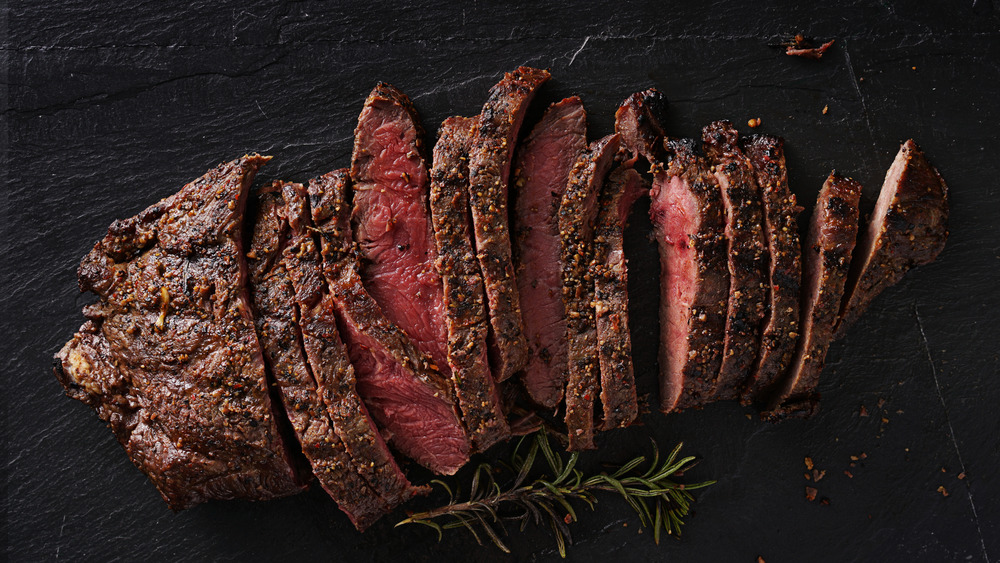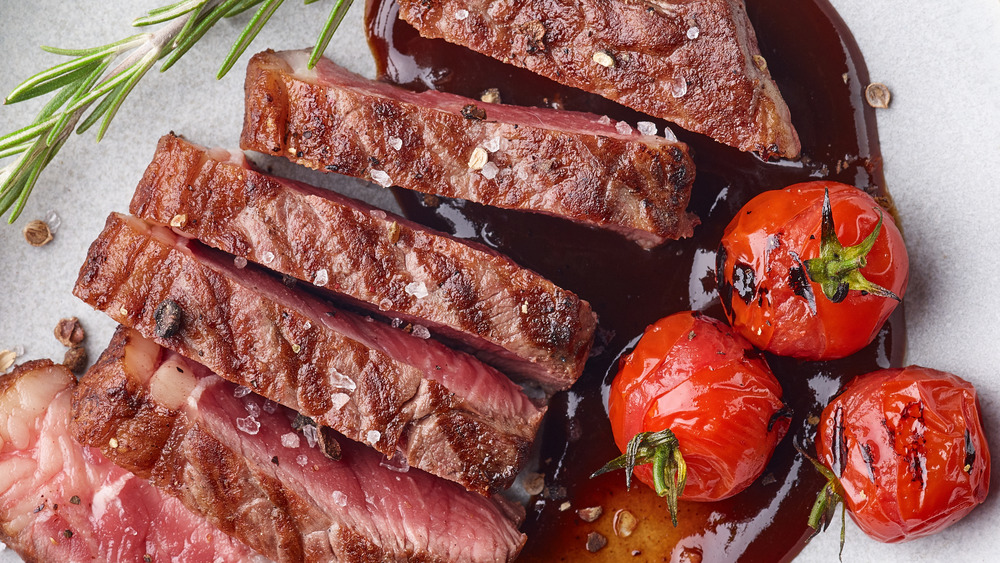The Trick To Making Cheap Steak Taste Fancy
A fancy steak dinner may seem like an impossible feat when pinching pennies. You may have, instead, taken to using inexpensive cuts of beef — and that's okay! As it happens, you can still create a well-rounded and delicious steak dinner for your loved ones without breaking the bank. Cheaper steaks don't have to be flavorless or rubbery; you can make them taste like restaurant-quality cuts.
The reason cheaper steaks are often chewy is because they come from the tougher, more muscular part of the animal (via Taste). The first and most important step to making cheap meat more appetizing, therefore, is to tenderize it. The tried-and-true method of doing this? Good ole salt, preferably kosher salt or sea salt, as table salt is too fine and absorbs into the meat too quickly.
When salt is added to meat, it draws out the beef's natural juices and forms a brine that is slowly reabsorbed, and thus makes the steak more tender (Cooks Illustrated). The length of time you should leave the salt on the meat depends on the thickness of the steak. The rule of thumb is an hour per inch. So if the steak is a half-inch thick, you leave the salt on for a half-hour. After the time is up, rinse off the salt.
Next comes seasoning, cooking, and slicing
Once you've rinsed the salt brine off the steak, you'll want to season the meat before cooking it to ensure the most robust flavor possible. First, you want to dry the meat off after running it under the tap. If you cook it wet, you'll essentially be steaming it and that will change the flavor. Next, add the seasoning of your choice, whether that's a signature rub or at least some salt and pepper. Partway through cooking, you can also take the steak off the grill and dunk it quickly into your favorite marinade to add extra flavor.
Oh, and about the grilling: You want to make sure to cook the meat slowly over medium heat rather than quickly over high heat. This slower cooking method will break down the tissue better, which further reduces the chewy and rubbery factor (via Eating Well).
Once your steak is cooked, there is still one more step you can take to further increase the tenderness: Cut the steak "across the grain," Eating Well advised. This simply means taking note of which direction the sinewy fibers are running and cutting crosswise through them. This breaks them up, making the meat more tender.

